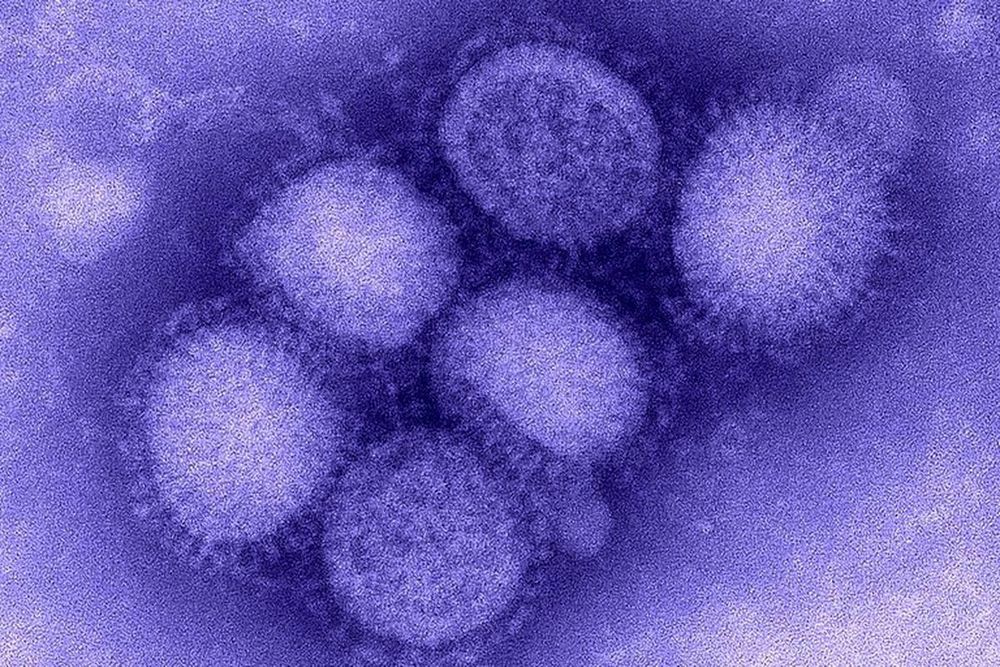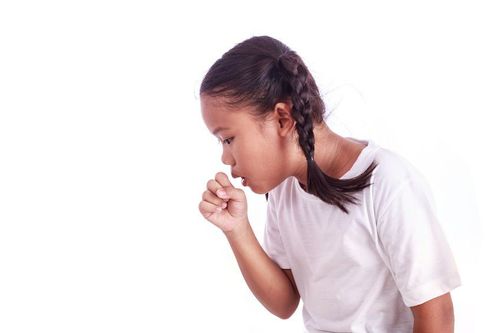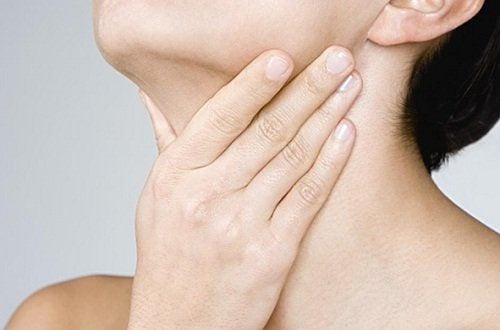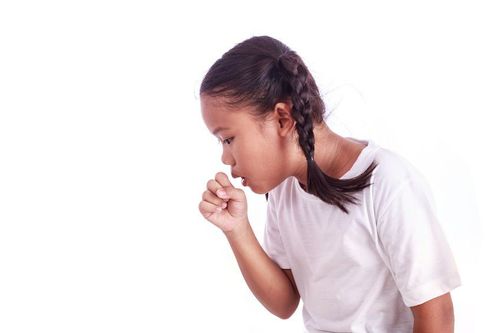This is an automatically translated article.
Posted by Specialist Doctor II Pham Thi Van Hanh - Pediatric Center - Vinmec Times City International Hospital
Acute laryngitis is common in children from 6 months to 5 years old, usually in the cold season. Depending on the cause, the clinical picture can vary from mild to very severe, causing sudden onset of laryngeal dyspnea at night. The disease should be examined and treated promptly, prevented. symptoms.
1. Definition of acute laryngitis in children
Laryngitis is an acute inflammatory disease of the larynx, characterized by stridor, hoarseness and a resounding cough (cough) due to inflammation in the vocal cords. The disease is common in children from 6 months to 5 years old, usually in the cold season.
Depending on the cause, the clinical picture can vary from mild to very severe, causing sudden onset of laryngeal dyspnea at night
Laryngitis causing laryngotracheal dyspnea is an emergency respiration in children.
2. Causes of acute laryngitis in children
Viral causes: Parainfluenza (parainfluenza -70%), influenza A virus, myxovirus group virus, Adenovirus, ECHO virus. Bacterial causes (H.influenzae, Streptococcus.pneumonial, Staphylococcus.aureus), diphtheria are common bacteria that cause laryngitis Fungal causes Favorable conditions: Strenuous vocal activity (too much talking) , too loud, crying, coughing a lot). Gastroesophageal reflux disease, allergies, smoke, cold

Virus cúm A là một trong các nguyên nhân gây bệnh viêm thanh quản cấp ở trẻ em
3. Diagnosis of acute laryngitis in children
3.1 Clinical In the first stage, the child has a mild fever, cough, runny nose, and after 1 to 3 days suddenly appears a resounding cough, hoarseness or loss of voice and difficulty breathing in the larynx. Clinical symptoms vary with age, severity, and etiology. Older children: Sore throat, hoarseness, loss of voice Young children are more susceptible because they are more susceptible, the airways are narrow, and they have a different structure than adults. The clinical presentation is usually severe, irritable, lethargic, enlarged neck lymph nodes, fever and flu symptoms, possibly dysphagia, vomiting, sore and dry throat, cough. Clinical manifestations are caused by the phenomenon. edema of the larynx, trachea causing airway obstruction, vocal cord edema. Physical examination: Usually awake, signs of infection are usually mild. (If the infection is severe, it should be differentiated from a bacterial cause.) Respiratory examination: The child has stridor during inspiration (Stridor laryngeal stridor - is a high-pitched breathing sound during inspiration, appearing when the airway is narrowed). In severe cases, there may be signs of respiratory failure. It is necessary to carefully examine the pharynx to detect laryngeal diphtheria 3.2 Diagnosis of laryngeal dyspnea Based on 3 main symptoms and 4 secondary symptoms:
3 main symptoms include:
Difficulty inspiring, slow breathing. There is a hissing sound in the larynx (Cornage) Contraction of respiratory muscles, mainly above and below the sternum, chest indrawing 4 secondary symptoms:
Change in voice, crying, cough (hoarseness, loss of voice. Head nods when breathing, each time you breathe in, the head tilts back. Laryngeal cartilage protrudes when inhaling. Wrinkles and widens the wings of the nose. When suffering from inflammation of the larynx - air - bronchi - lungs. alternating with manifestations of bronchopulmonary dyspnoea (rapid, shallow, mixed dyspnea in both phases and lungs with moist rales)
3.3 Diagnosis of laryngeal dyspnea Divided into 3 levels from mild to severe
Mild (grade 1): Full alertness, mild laryngeal stridor, stridor when crying, exerting. Coughing sound, clear or slightly hoarse, hoarseness. Manifestations of laryngeal dyspnea are not typical. , has not pulled or only slightly pulled the accessory respiratory muscle
Moderate (grade II): The child is excited, struggling, panicking but has not shown any signs of hypoxia. Yes, typical laryngeal dyspnea, wheezing sound Clear control even at rest, moderate respiratory muscle contractions.
Severe (grade III):
The child is very tired, lethargic or struggling, heart palpitations, pale skin, sweating. Severe shortness of breath, severe hypoxia, cyanosis. Rapid, shallow breathing, irregular breathing. Loss of voice completely, crying or speaking out loud, relieved. Not coughing out loud or not coughing at all. Shortness of breath at rest but may not be heard clearly when the obstruction is severe, Lung hypoventilation, severe chest constriction (upper and lower sternum).

Trẻ xuất hiện mệt mỏi thuộc mức độ III của mức độ khó thở thanh quản
3.4 Laboratory: Non-specific Blood count X-ray of the neck straight, tilted. Chest X-ray identifies lung injury or airway foreign body. Image of hypoglottic stenosis (Steeple sign) Laryngoscopy: not routine, only endoscopic finding the cause when: Need to differentiate airway foreign body. Recurrent laryngeal dyspnea Failure of medical treatment 3.5 Differential diagnosis Airway foreign body: Sudden laryngeal dyspnoea, history usually includes infiltrative syndrome. Children appear each cough, wheezing, shortness of breath, not related to weather changes. X-ray shows atelectasis, pneumothorax, or mediastinal deviation. Abscess of the posterior pharynx: Severe infection, high fever, sore throat, inability to swallow, often with cervical lymphadenopathy, examination of the posterior pharynx. throat is full. Acute epiglottitis: Sudden high fever, after a few hours, the child quickly has laryngeal dyspnea, has a special sitting style, leaning forward (smell position), has salivation. Handling: Absolutely do not force the child to lie down because this movement can make the child stop breathing. On the lateral neck radiograph, there is an edema of the epiglottis (fingerprints). Tetani: Acute laryngospasm, seen in young children with rickets. Diphtheria of the larynx: (laryngitis + infection, severe intoxication), may have a gradual onset, but when there is pseudomembranous obstruction, severe difficulty breathing. Examination of the pharynx showed a tough, difficult-to-dissect, and easy bleeding pseudomembranous membrane. Determine by taking fresh throat swab, culture for diphtheria bacteria. Bacterial tracheobronchitis: Usually pneumococcal or HI. Children often have a high fever, an infected face, and signs of upper respiratory obstruction. Measles-associated laryngitis: There is a manifestation of respiratory tract inflammation, a sequence of measles-like rash, epidemiological factors (epidemic, contact with children with measles...). Chronic laryngeal dyspnea: Congenital stridor due to laryngeal cartilage softening, laryngeal cartilage malformation. Chronic laryngeal stenosis: After trauma or stenosis due to hemangiomas, congenital malformations. Laryngeal papilloma: A type of papilloma, benign in the larynx, the tumor grows rapidly, recurs causing difficulty breathing in the larynx gradually. Diagnosis by laryngoscopy.
4. Progression of acute laryngitis in children
Usually the disease lasts 5-7 days, the most severe on day 2. Laryngitis can spread downwards causing damage depending on the location:
Acute laryngitis laryngotracheitis: Common in young children , which usually begins with a viral infection followed by an additional bacterial superinfection. The onset is similar to that of laryngitis alone, with mixed dyspnea. Severe clinical manifestations are often severe. Endoscopy showed edema in the subglottis, narrowing of the larynx lumen, and cone-shaped trachea facing downwards. Treatment in hospital, antibiotics croup bronchopneumonia: Severe manifestations with symptoms associated with croup and pneumonia, can cause airway obstruction.

Tiến triển bệnh viêm thanh quản cấp ở trẻ thường kéo dài 5-7 ngày
5. Management of acute laryngitis in children
5.1 Indications for hospitalization Severe laryngitis with altered consciousness, severe respiratory failure, poorly ventilated lungs Moderate/severe laryngitis. Laryngitis does not improve with epinephrine and initial anti-inflammatory therapy. Laryngitis with fever, signs of toxicity or severe dehydration. Laryngitis in children under 6 months of age 5.2 Treatment of acute laryngitis Depending on the degree of difficulty in breathing, fever or not, re-evaluate after 10-15 minutes of localization. Pay attention to find and treat the cause of laryngeal dyspnea.
Mild laryngeal dyspnea (grade I):
Can be treated as a single dose oral dexamethasone (0.15 mg/kg – maximum total dose 10 mg) or prednisone 2 mg/kg for 2-3 days, requiring re-examination every day. Can be replaced by nebulizer Budesonide 2mg (especially when the child is vomiting or has contraindications to systemic corticosteroids such as chickenpox, tuberculosis, gastrointestinal bleeding, peptic ulcer..) No need to use gas epinephrine. Use Do not prescribe antibiotics when there is no evidence of infection. Symptomatic treatment: reduce fever, reduce cough, drink plenty of fluids. Monitor for serious signs such as: stridor when lying still, difficulty breathing, cyanosis, loss of voice, difficulty swallowing, high fever, fatigue, worsening symptoms or illness lasting more than 7 days. Moderate laryngeal dyspnea (Grade II):
Hospitalization Closely monitor vital signs, detect early signs of respiratory failure (Outpatient treatment only if good improvement with anti-inflammatory drugs and aerosol adrenaline, copper sufficient time for close follow-up). Dexamethasone intravenously, dose 0.6mg/kg/time, can be repeated after 6-12 hours if necessary; or give oral dose of 0.15mg/kg/day, or nebulized budesonide 1-2mg/single dose if there are contraindications to systemic corticosteroid use. After 2 hours, if there is no improvement consider aerosol adrenaline, antibiotics if the cause of infection has not been ruled out. Adrenaline nebulizer 1/1000, 2-5 ml or dose 0.4 - 0.5 ml/kg (maximum 5 ml), children under 4 years old = 2ml
Severe laryngeal dyspnea (grade III):
Inpatient treatment, located in the emergency department, anti-inflammatory edema need to use Adrenalin in combination with Corticosteroids The first year is high, avoid crying because it increases laryngoedema causing difficulty breathing more than. Use oxygen to ensure SpO2 > 95%. Inhalation of Adrenaline 1/1000 2-5ml or 0.4-0.5ml/kg (maximum 5ml), repeat dose 2 after 30 minutes - 1 hour if breathing is severe and then 1-2 hours if required, up to 3 doses; Adrenaline is contraindicated in tetralogy of Fallot and outflow-obstructed ventricular cardiomyopathy because of the potential for sudden reductions in cardiac output. Inhalation hydrocortisone 10 mg/kg or budesonide 2 mg (4 tubes) every 12 hours for a maximum of 4 Dexamethasone dose 0.6 mg/kg IV once, can be repeated after 6-12 hours. Or corticosteroids 1-2 mg/kg/day, intravenous antibiotics Cefotaxime or Ceftriaxone for 5 days. Consult an ENT specialist when not responding to aerosol adrenaline or need differential diagnosis, find the cause of shortness of breath. Intubation is indicated for failure of nebulized adrenaline and intravenous dexamethasone. The child is still pale, lethargic, exhausted, and has stopped breathing. When intubation, the endotracheal size should be 0.5-1mm smaller than normal. Tracheal extubation is usually possible after 24 to 48 hours. Intubation should be preferred over tracheostomy. 5.3 Indication of antibiotics In case of suspected bacterial laryngitis (sudden manifestation of high fever, infectious facial expression, intoxication). Antibiotics of choice Amoxicillin + A. Clavulanic. Severe cases choose treatment with Ceftriaxone 100 mg/kg/day in 2 divided doses

Cha mẹ cần cho trẻ sử dụng thuốc theo đúng chỉ định của bác sĩ
5.4 Supportive treatment Reassure fear, reduce stress, give the child a quiet place to rest, avoid excessive crying, avoid exertion Give the child plenty of warm water to drink, warm compresses on the neck, apply alcohol Avoid substances stimulant, carbonated, hot spicy drinks Keep children warm, especially in the neck and chest area. Supplement nutrition, increase resistance
6. Monitor for timely detection of signs of worsening
Shortness of breath when lying still Occurrence of shortness of breath Child is very tired Open mouth to breathe, salivation High fever over 39 degrees C Shortness of breath in the larynx lasting more than 3 days
7. Discharge criteria
Awake Out of wheezing at rest Stop showing respiratory failure, SpO2 normal Eat and drink.

Khi trẻ tỉnh táo và ăn uống được cũng là thời điểm trẻ có thể xuất viện
8. Prevention of acute laryngitis in children
Vaccinating against influenza and diphtheria Preventing acute respiratory infections: (keep neck and chest warm, drink warm water, avoid contact with people with acute respiratory infections, increase nutrition, hygiene nasopharyngeal system) Early detection of children with laryngitis for treatment As a key area of Vinmec Health system, Pediatrics Department always brings satisfaction to customers and is highly appreciated by industry experts with:
Gathering a team of leading doctors and nurses in Pediatrics: including leading experts, highly qualified (professor, associate professor, doctorate, master), experienced, worked in big hospitals like Bach Mai, 108.. The doctors are all well-trained, professional, have a heart - reach, understand young psychology. In addition to domestic pediatric specialists, the Department of Pediatrics also has the participation of foreign experts (Japan, Singapore, Australia, USA) who are always pioneers in applying the latest and most effective treatment regimens. . Comprehensive services: In the field of Pediatrics, Vinmec provides a series of continuous medical examination and treatment services from Newborn to Pediatric and Vaccine,... according to international standards to help parents take care of their baby's health from birth to childhood. from birth to adulthood Specialized techniques: Vinmec has successfully deployed many specialized techniques to make the treatment of difficult diseases in Pediatrics more effective: neurosurgery - skull surgery, stem cell transplantation. blood in cancer treatment. Professional care: In addition to understanding children's psychology, Vinmec also pays special attention to the children's play space, helping them to have fun and get used to the hospital's environment, cooperate in treatment, improve the efficiency of medical treatment.
Please dial HOTLINE for more information or register for an appointment HERE. Download MyVinmec app to make appointments faster and to manage your bookings easily.













